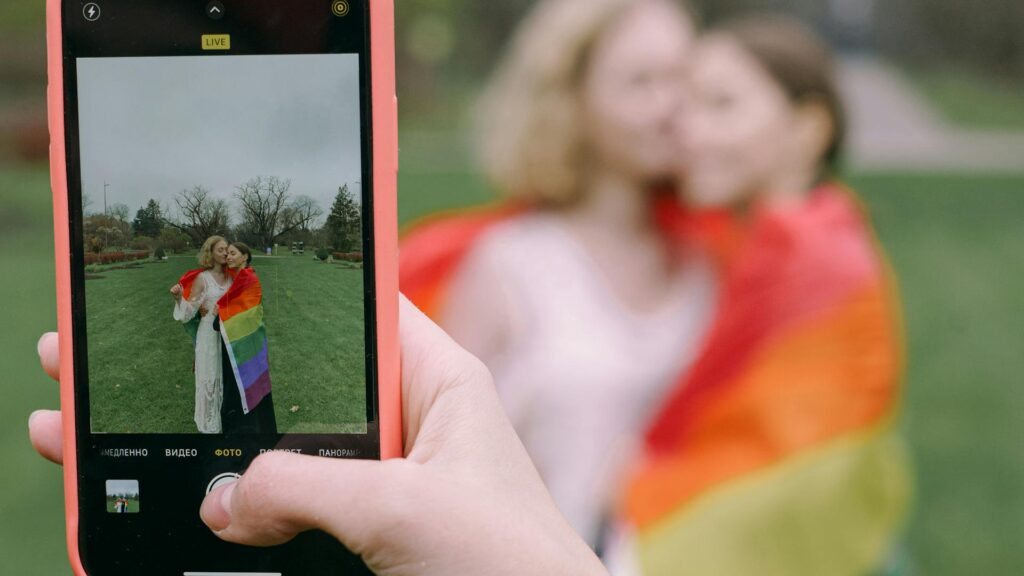Pride month, held every June, is a chance to celebrate the LGBTQ+ community, honor queer history, and advocate equality for all.
This month-long celebration is not only a festive acknowledgment of the progress we’ve made but also an important reminder of the struggles that LGBTQ+ community still faces today. Although we’ve come a long way, we still have a long way to go.
Here’s what to know about the origins of Pride Month, how to show support as an ally, and the link between the LGBTQ+ community and mental health.
Understanding the History of Pride Month
The origins of Pride Month date back to June of 1969, when the Stonewall Uprising took place. Police raided the Stonewall Inn, which is a popular gay bar in New York City. This raid led to a monumental uprising, which ended up playing a huge role in the LGBTQIA+ rights movement. The gay community and allies were pushing for change, demanding equal rights, justice, and the opportunity to simply be their true selves.
The next summer, in June 1970, the first Pride March was held in New York on the anniversary of the pivotal Stonewall Uprising. Since then, the month of June has become a time of celebration, remembrance, and advocacy.
Ways to Show Support as an Ally
There are countless ways to show your allyship this Pride Month (and all year round). Here are some ideas.
Educate Yourself and Others
If you are cis-gendered and heterosexual, you may not have experienced discrimination or bullying due to your gender identity or sexual identity. Consequently, you may not be aware of the challenges and injustices that LGBTQ+ individuals face in their day-to-day lives.
“Learn about LGBTQ+ and mental health issues, such as how being LGBTQ+ has impacted them,” says Jane Miller, a licensed independent social worker with Grow Therapy, who is also a member of the LGBTQ+ community. “They may have faced discrimination, bullying, isolation, stigma, abandonment from unsupportive family members, or growing up being unsupported by religious beliefs.”
The Human Rights Campaign Foundation has excellent information about allyship as well as many other learning resources available. Here’s a brief reading list of some books you can check out:
- The Gay Revolution: The Story of the Struggle by Lillian Faderman
- Transgender History: The Roots of Today’s Revolution by Susan Stryker
- The Savvy Ally: A Guide for Becoming a Skilled LGBTQ+ Advocate by Jeannie Gainsburg
- Stonewall: The Definitive Story of the LGBTQ Rights Uprising that Changed America by Martin Duberman
If you prefer to watch documentaries, here are a few recommendations:
- Before Stonewall: The Making of A Gay and Lesbian Community (available to rent on Amazon Prime Video or Apple TV)
- Paris is Burning (watch on Max)
- The Death and Life of Marsha P. Johnson (watch on Netflix)
Attend Pride Events
Of course, attending Pride celebrations is one of the most fun parts of Pride Month. Here are some ideas:
- Attend parades and marches: Many major cities hold Pride parades or marches. Attend these events to show your support as an ally and have a great time.
- Attend Pride parties: Besides parades, many cities with large LGBTQIA+ populations will have many parties that double as fundraisers to celebrate Pride Month. For example, gay bars or clubs will have parties, donating ticket fees or cover charges to LGBTQIA+ charities.
- Volunteer at Pride events: To go further in your allyship, contact local LGBTQIA+ organizations and ask them how you can help out. See if they need volunteers to assist at parades, marches, or other events.
- Support LGBTQ+ businesses and creators: These Pride Events are a great opportunity to support LGBTQ+-owned businesses and creators. Often they will be vendors at these events, but you can also search online for queer artists and creators.
Advocate for LGBTQ+ Rights
Pride Month isn’t just about celebrating – it’s also about using your voice to advocate and push for what’s right. Here are a few ways to do this:
- Contacting legislators and policymakers: Contact your local, state, or national reps to express support for laws protecting LGBTQ+ individuals and promoting equality. Post on social media and encourage your friends to do the same—there’s power in numbers.
- Participating in campaigns and signing petitions: Your support matters, whether it’s a local or national initiative. Many LGBTQ+ advocacy groups and nonprofits run campaigns that need public support. Signing petitions and sharing them on social media can help spread the word.
- Supporting inclusive policies at work and in your community: Make sure your workplace has non-discrimination policies and supportive resources for members of the LGBTQIA+ community. If it doesn’t speak to HR and push for change. You can do the same with community centers, schools, and more.
Use Inclusive Language and Pronouns
Regardless of whether or not it’s Pride Month, you should always use respectful, inclusive language. It’s crucial to respect people’s gender identities and pronouns. If you’re unsure what someone’s pronouns are, politely and respectfully ask which pronouns they use.
You can gently correct people who use inappropriate terms or slurs and explain to them why inclusivity is so important. Words matter, and your words can make a huge difference in whether someone feels accepted or alienated.
Build Safe Spaces and Celebrate Diversity
Aim to make people of all sexual orientations and gender identities feel welcome. Set a positive example of allyship by encouraging and celebrating diversity, standing up for what’s right, pushing for equality, and using inclusive language.
You can also work with local LGBTQ+ community centers to get involved there and ask for advice on how to make your work, school, or home a safer space. Consider attending events or fundraisers celebrating different cultures and identities related to LGBTQ+ intersectionality.
Offer Emotional and Practical Support
“Listen actively and with compassion, building a sense of safety and trust,” says Miller. Being a listening ear can make a huge difference in helping someone feel validated and less alone. Try to put yourself in their shoes and avoid judgment.
You can also provide them with resources for coming out or transitioning, such as handbooks from The Trevor Project or information from the Human Rights Campaign. If they’re struggling with their mental health and looking for the right therapist, you can help them in their search.
Therapy and Mental Health Support for the LGBTQ+ Community
Sadly, many mental health conditions are more prevalent in the LGBTQIA+ community than in the general population due to discrimination, bullying, and more. Research has found that LGBTQ+ individuals are more likely to experience:
The numbers surrounding LGBTQ+ youth are especially worrisome. Here are some statistics from The Trevor Project:
- 39% seriously considered suicide
- 12% attempted suicide
- 66% experience anxiety
- 53% experience depression
We can’t underestimate intersectionality. People who belong to multiple marginalized groups, such as people of color, often face discrimination on multiple fronts. Intersectional oppression increases the risk of mental health struggles compared to their white LGBTQIA+ community members.
How Therapy Can Help
Don’t wait to get help. Therapy from an LGBTQ+-affirming therapist can make a huge difference. Miller says therapy can help queer people:
- Experience a safe space to talk about their feelings.
- Learn coping strategies to deal with the challenges that impact them.
- Build a positive support system.
- Improve self-confidence.
- Work through and let go of childhood trauma.
- Feel empowered to live a fulfilling life.
- And more!
These skills are truly invaluable for an LGBTQ+ person struggling with their mental health. In many cases, affirming care can truly be life-saving.
Therapy for the LGBTQ+ community
If you or a loved one is struggling to find an LGBTQ+ affirming therapist, Grow Therapy is here to help.
Working with a therapist who truly understands the unique struggles of this community is key to healing. People often feel more comfortable working with someone else who shares their identity, whether that’s trans, gay, lesbian, non-binary, bisexual, or something else. An unspoken sense of understanding and solidarity can make a huge difference.
On our site, you can use our filters to search for therapists in your state who accept your insurance and specialize in working with LGBTQ+ clients. Get started today.

